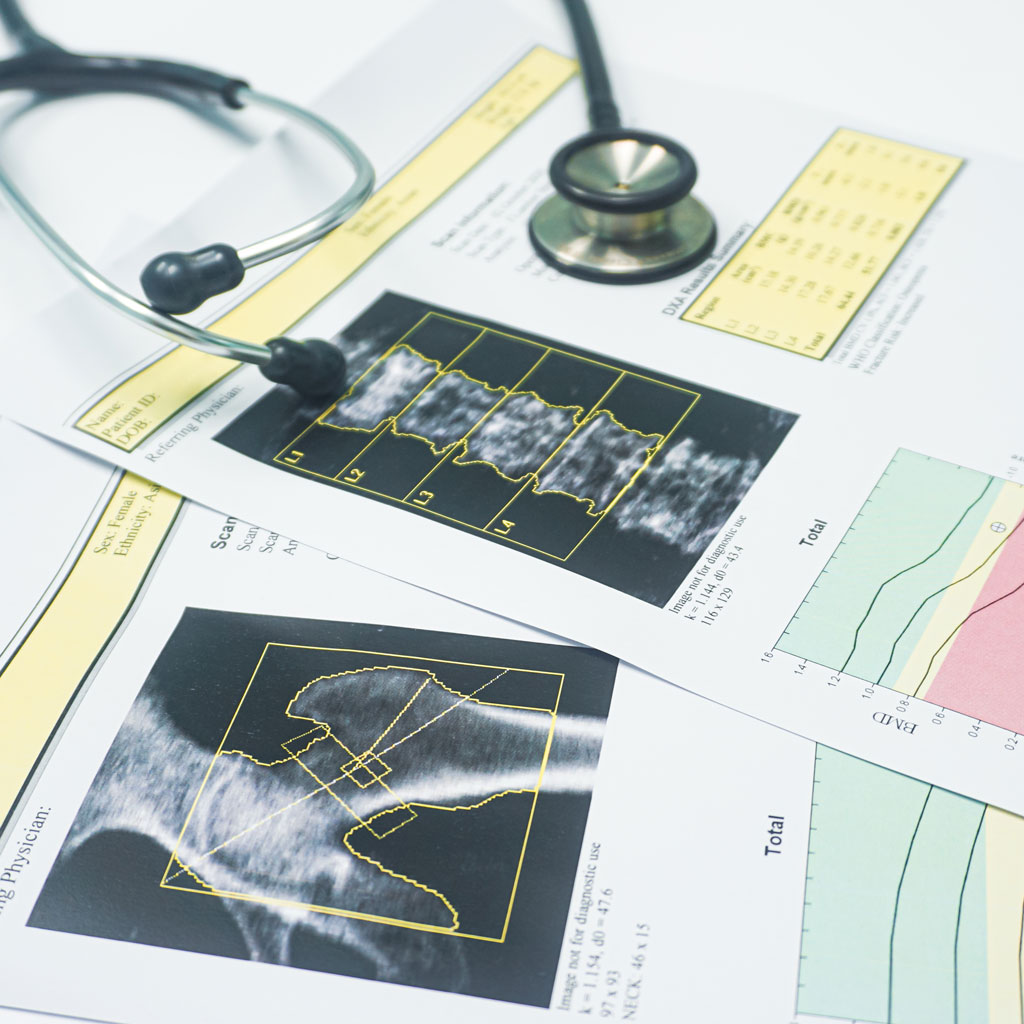Bones are the often overlooked heroes of our bodies. They shield our organs and store and release our supply of calcium, a mineral necessary not only for building and maintaining strong bones but also for the function of all the cells in our bodies.
But our bones can be susceptible to breakage and diseases like osteoporosis as we age. According to research from the Journal of Bone and Mineral Research “In the United States, an estimated 10 million people age 50 years and older have osteoporosis. Most of these people are women, but about 2 million are men. Just over 43 million more people — including 16 million men — have low bone mass, putting them at increased risk for osteoporosis.”
This is where the DEXA bone scan comes into play.
What is a DEXA Bone Scan?
Maintaining strong, healthy bones is essential for a vibrant and active life. However, conditions like osteoporosis often develop silently, without obvious symptoms—until a fracture occurs. This is where a DEXA bone scan comes in. Short for Dual-Energy X-ray Absorptiometry, a DEXA scan is a quick, non-invasive test that provides crucial insights into your bone health. A DEXA scan is an imaging test that measures the strength of your bones. It uses X-rays to measure your bone density. DXA is an abbreviation for dual-energy X-ray absorptiometry.
This scan is quick and painless. During the exam, the arm of the machine will pass over you, taking digital images of your bones. The scan usually takes 10 to 20 minutes.
What a DEXA Scan Can Identify
A DEXA bone scan is a powerful diagnostic tool that provides detailed insights into bone health. Here are some conditions it can identify:
1. Osteoporosis
Osteoporosis is a condition characterized by weak and brittle bones, increasing the risk of fractures. A DEXA scan measures bone mineral density (BMD) to determine if your bones have lost significant strength. By comparing your BMD to standard values, healthcare providers can diagnose osteoporosis early and recommend treatments to slow bone loss, reduce fracture risk, and improve bone health.
2. Osteopenia
Osteopenia is the stage of bone loss that precedes osteoporosis. While it’s not as severe, it signals reduced bone density that may progress without intervention. A DEXA scan can detect osteopenia early, allowing individuals to take preventive measures, such as lifestyle changes, dietary improvements, or medication, to protect bone health before it worsens.
3. Fracture Risk
Beyond diagnosing bone density issues, a DEXA scan plays a role in assessing fracture risk. This information helps guide treatment decisions and preventive care strategies tailored to individual risk levels.
4. Bone Loss from Medical Conditions or Medications
Certain medical conditions, such as rheumatoid arthritis, or long-term use of medications like corticosteroids, can contribute to bone loss. DEXA scans to monitor changes in bone density over time, helping doctors evaluate how these factors affect bone health and adjust treatment plans accordingly.
Should I Get A DEXA Bone Scan?
According to the CDC, “Screening for osteoporosis is recommended for women who are 65 years old or older and for women who are 50 to 64 and have certain risk factors, such as having a parent who has broken a hip. However, there are other risk factors for osteoporosis besides age and gender, such as some intestinal disorders, multiple sclerosis, or low body weight.”
Contact Advanced Medical Imaging Consultants today to schedule your DEXA scan!

